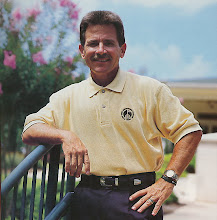While snow can appear as a beautiful and calm blanket for a golf course during the winter month, undesirable things can be happening underneath. In the basic of terms, turf can survive under snow for extended periods but if there is an ice layer under the snow then the turf can only survive for a certain amount of time. While snow affords oxygen availability to the
turfgrass plant, an ice layer prevents oxygen to get to the turf.
Each different species of
turfgrass has its own specific threshold of tolerance before damage occurs to the plant under ice. For this reason sometimes drastic measures have to be initiated to protect the turf, even during the frozen winter when golfers are thousands of miles away from Chicago in the warmer climates. In the event that you would like to learn more about the effects of snow and ice damage to turf, please refer to the following website and article.
http://www.usga.org/course_care/regional_updates/regional_reports/midatlantic/What-Is-Northmoor Country Club golf course under snow

The photo below is of
Microdochium patch, a winter
turfgrass disease.
We want to avoid this at all costs. It occurs under extended periods of ice and snow.

Numerous diseases can occur under the snow and ice
that can affect the appearance and playability of the
golf course the following spring.
The photo below shows the effects of ice damage in a shaded area on a golf course.

More winter and ice damage on a course in Virginia.

The photo below is of a 1 inch ice layer on our green at
NCC.

Our staff removed the snow layer with a sand machine blade
so that we could get to the ice layer.

Once the snow was removed from the surface of the green
we shattered the ice layer with the
aerifyer machine tines.
This allowed air and sunlight to get to the grass plant.

The surface of the green was cleared of ice for
turfgrass protection & survival.
 The photo below is of Microdochium patch, a winter turfgrass disease.
The photo below is of Microdochium patch, a winter turfgrass disease.









No comments:
Post a Comment